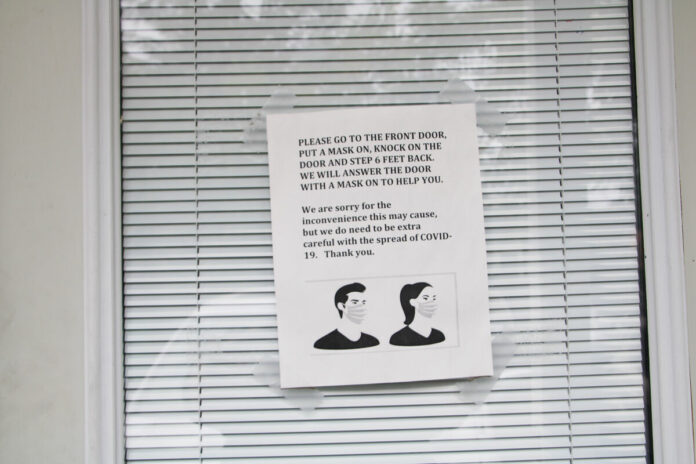Starting Wednesday, Californians will once again be required to wear masks indoors in public places regardless of vaccination status, state health officials announced today.
The renewed masking requirement follows a 47% increase in COVID-19 case rates since the Thanksgiving holiday and the arrival of new variant, said Dr. Mark Ghaly, the state’s health secretary.
The mask mandate will run through Jan. 15 and is specific to public settings, not private gatherings. Nevertheless, health officials recommend people get tested ahead of holiday gatherings and consider better ventilation by opening windows or convening outdoors when possible.
The mandate will mainly affect about 50% of the state population that lives in counties that currently don’t have their own mask mandate, Ghaly said. Los Angeles and several Bay Area counties already have mask mandates for public settings in place.
Along with renewed mask rules, the state will also require that attendees at mega events — those of 1,000 people or more — who are unvaccinated show proof of a negative COVID-19 test taken within one day, if an antigen test, or two days for PCR tests. The state is also recommending that travelers get tested before and after trips.
The first statewide mandate was imposed in 2020 and lifted last June.
After the state’s June 15 reopening, vaccinated people were allowed to return to grocery stores, retail and other public settings without a mask — at least under state rules. People who were not vaccinated still had to adhere to indoor masking. Telling the difference, however, was tricky: Ghaly acknowledged today that throughout the pandemic enforcement of these rules has been a challenge.
Ghaly said state officials are not considering any further restrictions or capacity limits on businesses at this time. “Is this the first step along the course we’re familiar with…including closures? Absolutely not.”
That’s because, he said, despite concerns of the new Omicron variant and rising case rates, the state has effective tools at hand: vaccines and masks.
And while it can be discouraging to be talking about a universal mask mandate once again, Shira Shafir, an epidemiology professor at UCLA, said people must continue relying on masking, good ventilation and testing.
The type of mask makes a difference, Shafir said. With an improving supply chain, people should opt for surgical and N95 masks and ensure they fit well over the nose and under the chin.
She described California’s current situation as a tale of two states: On one hand, some counties have relaxed masking and low vaccine uptake, and on the other, there are counties with stronger vaccination rates where people have been masking continuously indoors, even after the state lifted its own requirements. In those counties “you have a slower increase of new cases. Not none, but there is less,” Shafir said.
The state’s 7-day average case rate as of today stood at 14.1 new cases per 100,000 people. On the high end, Riverside and San Diego counties reported rates of 19.8, San Bernardino County is at 22.7, Inyo County 29.4 and Mono County 50.1, according to state data.
On the lower end, Los Angeles reported 13.3 new cases per 100,000 and San Francisco and Alameda counties reported rates of 8.5 and 7.6, respectively.
To date, 74,685 Californians have died from COVID-19.
SoCoNews is partnering with CalMatters to provide a wider variety of news that gives our readers national and regional context for issues facing our local communities.









